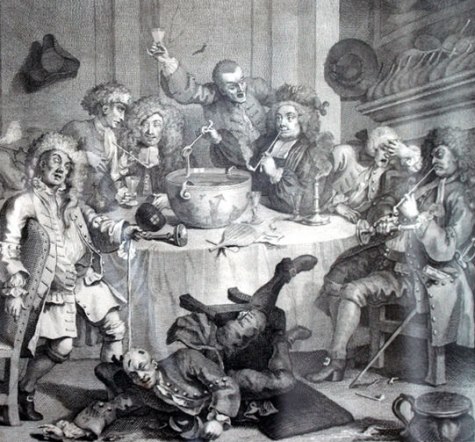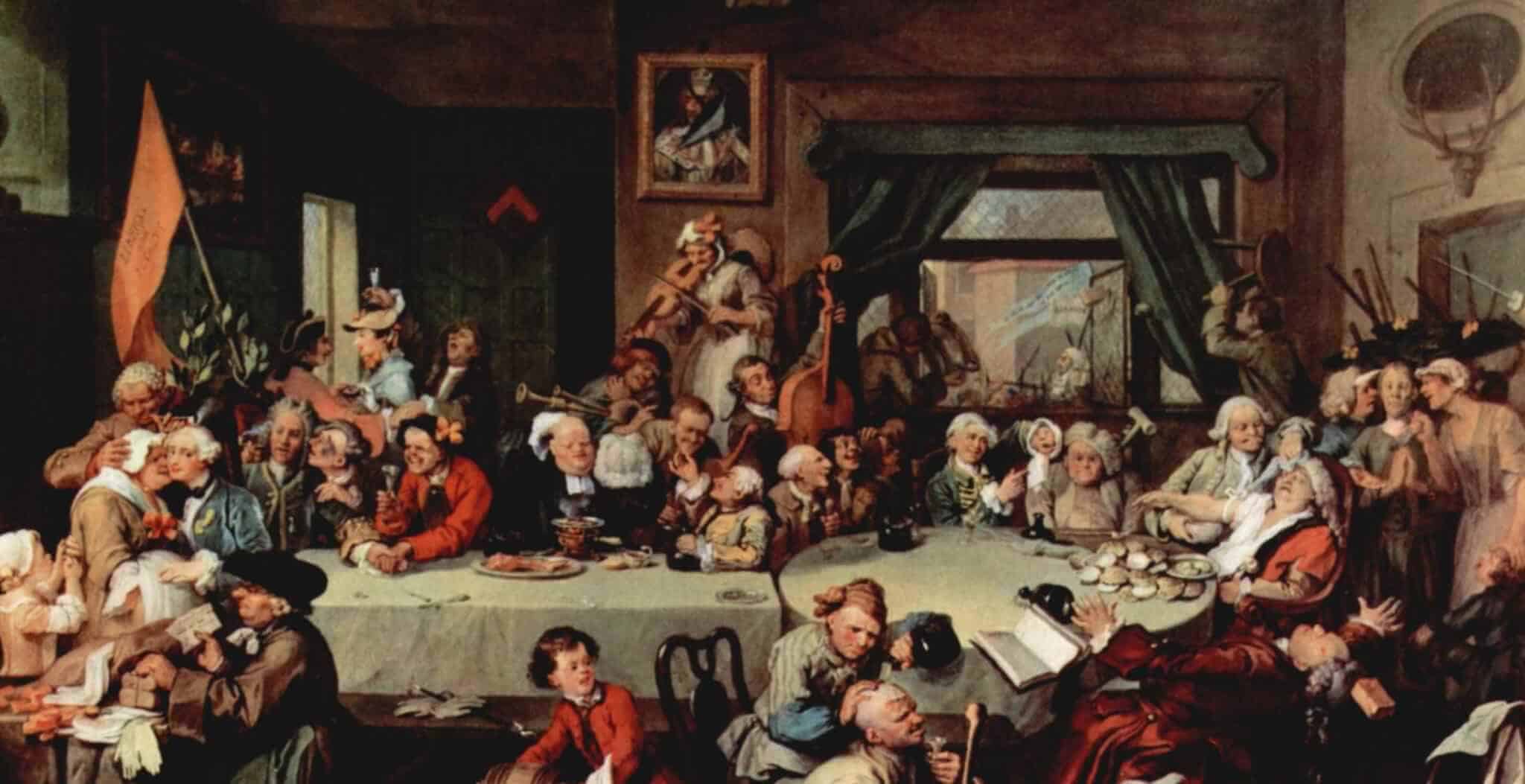In 1644, Christmas was banned by Oliver Cromwell, carols were forbidden and all festive get-togethers were deemed against the law. With the restoration of Charles II, Christmas was re-instated, albeit in a more subdued manner. By the Georgian period (1714 to 1830), it was once again a very popular celebration.
When searching for information on a Georgian or Regency (late Georgian) Christmas, who better to consult than Jane Austen? In her novel, ‘Mansfield Park’, Sir Thomas gives a ball for Fanny and William. In ‘Pride and Prejudice’, the Bennets play host to relatives. In ‘Sense and Sensibility’, John Willoughby dances the night away, from eight o’clock until four in the morning. In ‘Emma’, the Westons give a party.
And so it would appear that a Georgian Christmas was very much all about parties, balls and family get-togethers. The Georgian Christmas season ran from December 6th (St. Nicholas Day) to January 6th (Twelfth Night). On St. Nicholas Day, it was traditional for friends to exchange presents; this marked the beginning of the Christmas season.
Christmas Day was a national holiday, spent by the gentry in their country houses and estates. People went to church and returned to a celebratory Christmas dinner. Food played a very important part in a Georgian Christmas. Guests and parties meant that a tremendous amount of food had to be prepared, and dishes that could be prepared ahead of time and served cold were popular.

For Christmas dinner, there was always a turkey or goose, though venison was the meat of choice for the gentry. This was followed by Christmas pudding. In 1664 the Puritans banned it, calling it a ‘lewd custom’ and ‘unfit for God-fearing people’. Christmas Puddings were also called plum puddings because one of the main ingredients was dried plums or prunes.
 In 1714, King George I was apparently served plum pudding as part of his first Christmas dinner as a newly crowned monarch, thus re-introducing it as a traditional part of Christmas dinner. Unfortunately there are no contemporary sources to confirm this, but it is a good story and led to his being nicknamed ‘the pudding king’.
In 1714, King George I was apparently served plum pudding as part of his first Christmas dinner as a newly crowned monarch, thus re-introducing it as a traditional part of Christmas dinner. Unfortunately there are no contemporary sources to confirm this, but it is a good story and led to his being nicknamed ‘the pudding king’.
Traditional decorations included holly and evergreens. The decoration of homes was not just for the gentry: poor families also brought greenery indoors to decorate their homes, but not until Christmas Eve. It was considered unlucky to bring greenery into the house before then. By the late 18th century, kissing boughs and balls were popular, usually made from holly, ivy, mistletoe and rosemary. These were often also decorated with spices, apples, oranges, candles or ribbons. In very religious households, the mistletoe was omitted.
The tradition of a Christmas tree in the house was a German custom and apparently brought to Court in 1800 by Queen Charlotte, wife of George III. However it was not until the Victorian era that the British people adopted the tradition, after the Illustrated London News printed an engraving of Queen Victoria, Prince Albert and their family around their Christmas tree in 1848.
A great blazing fire was the centrepiece of a family Christmas. The Yule log was chosen on Christmas Eve. It was wrapped in hazel twigs and dragged home, to burn in the fireplace as long as possible through the Christmas season. The tradition was to keep back a piece of the Yule log to light the following year’s Yule log. Nowadays in most households the Yule log has been replaced by an edible chocolate variety!
The day after Christmas, St Stephen’s Day, was the day when people gave to charity and the gentry presented their servants and staff with their ‘Christmas Boxes’. This is why today St Stephen’s Day is called ‘Boxing Day’.
January 6th or Twelfth Night signalled the end of the Christmas season and was marked in the 18th and 19th centuries by a Twelfth Night party. Games such as ‘bob apple’ and ‘snapdragon’ were popular at these events, as well as more dancing, drinking and eating.
A popular drink at assemblies was the Wassail bowl. This was similar to punch or mulled wine, prepared from spiced and sweetened wine or brandy, and served in a large bowl garnished with apples.

A forerunner of today’s Christmas cake, the ‘Twelfth Cake’ was the centrepiece of the party and a slice was given to all members of the household. Traditionally, it contained both a dried bean and a dried pea. The man whose slice contained the bean was elected king for the night; the woman who found a pea elected queen. By Georgian times the pea and bean had disappeared from the cake.
Once Twelfth Night was over, all the decorations were taken down and the greenery burned, or the house risked bad luck. Even today, many people take down all their Christmas decorations on or before 6th January to avoid bad luck for the rest of the year.
Unfortunately the extended Christmas season was to disappear after the Regency period, brought to an end by the rise of the Industrial Revolution and the decline of the rural way of life that had existed for centuries. Employers needed workers to continue working throughout the festive period and so the ‘modern’ shortened Christmas period came into being.
To finish, it seems only fitting to give Jane Austen the last word:
“I wish you a cheerful and at times even a Merry Christmas.” Jane Austen
Published: 1st April 2015







